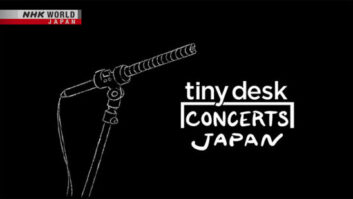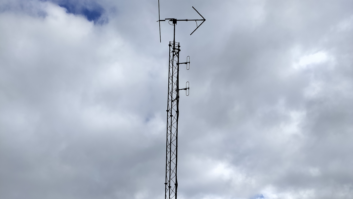Readers of Digital Radio Update know that we frequently cover technology related to the �mobile Internet� because, ultimately, it�s a competitor to terrestrial radio (and television).� Lately in DRU we�ve been discussing LTE-U (LTE using unlicensed frequencies) � both its obvious benefits and its potential (at least according to some quarters) to interfere with existing Wi-Fi services. �I recently asked industry expert Jay Botelho�some questions about LTE-U.�
Botelho is the director of product management atSavvius, Inc., a leader in packet-level network analysis and security forensics. �Jay holds an MSEE and is an industry veteran with more than 25 years of experience in product management, product marketing, program management and complex analysis.
First, Jay gave us a little history behind LTE-U’s development.�
�
Congestion on cellular networks due to data usage is already a significant problem, especially in high-density areas like stadiums and arenas. Hand-off to Wi-Fi is already a major goal in high-density environments, with carriers strongly encouraging venues to provide high-quality Wi-Fi networks � at the expense of the venue. This is feasible for most fixed venues, like a football stadium, but not for events like music festivals, which still suffer from the same high-density network congestion. LTE-U is an excellent solution here, putting the financial and operational burden back on those to whom it matters most � the carriers � with obvious benefit to all cellular users, and that�s pretty much each and every one of us.�
�
The drawback is that the solution is now carrier-dependent. When a venue deploys their own Wi-Fi everyone benefits, even those with devices that don�t have a cellular data plan. But when the carrier deploys LTE-U, it is obviously for the benefit of the carrier and their customers only. And if more than one major carrier wants to provide service in the same area cooperation is essential to avoid common Wi-Fi problems like co-channel interference. Cooperation between competitors isn�t something to count on, especially in an industry as fiercely competitive as the cellular industry. Some regulation could help in this scenario, enforcing equal access, but that seems highly unlikely as equal access is already implied by the band being unlicensed. But in the end customer experience is key to customer retention, so we may find that Wi-Fi access and performance is better when we let a few major carriers address the issue from a commercial perspective, rather than the Wild West of Wi-Fi that we have today. Just visit any airport and try to use the wireless network to experience what unbridled Wi-Fi access does to the user experience.�
As for launch of LTE-U, this doesn�t seem to be a question. Every cellular customer, including Wi-Fi engineers, wants a better experience. LTE-U will drive a better experience. �In the end every cellular subscriber will be paying for LTE-U access as part of their wireless service, versus the �free� Wi-Fi we get today in many public places. And we all know the old adage is true, �you get what you pay for.�
DI: We�ve covered LTE-U quite a bit in Digital Radio Update, but please describe LTE-U for our readers.
JB: LTE (or 4G LTE) is the technology most of us use every day when using our cell phones for data connections.� It uses frequencies that are licensed by the carriers.LTE-U allows carriers to send that same data using unlicensed frequencies, specifically those same frequencies (channels) used by Wi-Fi access points.�
�
DI: How how LTE-U will affect Wi-Fi signals that people have grown accustomed to using around the home and office environment?
JB: The best way to think about it is as follows: Adding an LTE-U base station is just like adding another traditional access point (AP). AP�s can interfere with each other, and an LTE-U base station can interfere with an AP if they are set to the same channel. This is no different than what we have today. Anyone can deploy an access point, and set it to the same channel as your access point, causing potential problems. LTE-U base stations have the ability to automatically find the �best� available channel. Also, given the attention that LTE-U has already received, carriers will be very inclined to minimize interference with existing Wi-Fi deployments to every possible extent.�
�
DI: Will LTE-U use omni-direction, or directional antennas?
JB: Again, no real difference here from existing Wi-Fi technology.� Most Wi-Fi AP�s have external omnidirectional antennas that can be changed to directional antennas. The same is true for LTE-U.�
�
DI: How will LTE-U power be limited?
JB: LTE-U must follow the same FCC rules for power limits as any commercially available access point.
�
DI: Will LTE-U have any effect on point-to-point microwave links that rely on unlicensed spectrum?� I.E., is there a possibility that the turn-up of new LTE-U base stations might interfere with radios such as the UbiquitiRocket series?
JB: No different than the addition of any other access point.�
�
DI: Regarding this article from Bloomberg:http://www.bloomberg.com/news/articles/2015-12-03/google-microsoft-comcast-say-verizon-s-new-cellular-tech-could-wreck-wi-fi
The question is: are the objections raised reasonable, or they much ado about nothing?
JB: It depends on�the application.�I think in most�situations it’s a �much ado about nothing.” �But in specific circumstances, like a stadium that has deployed a carefully designed and highly tuned wireless network with the goal of supplying the very best data rate possible to tens of thousands of users simultaneously, the introduction of LTE-U base stations could seriously disrupt this carefully planned network. But�I would hope that in such a situation the carrier would work very closely with the venue to mitigate issues, or�possibly even decide the venue has already done the best job possible and simply�avoid an overlay installation.”
�












